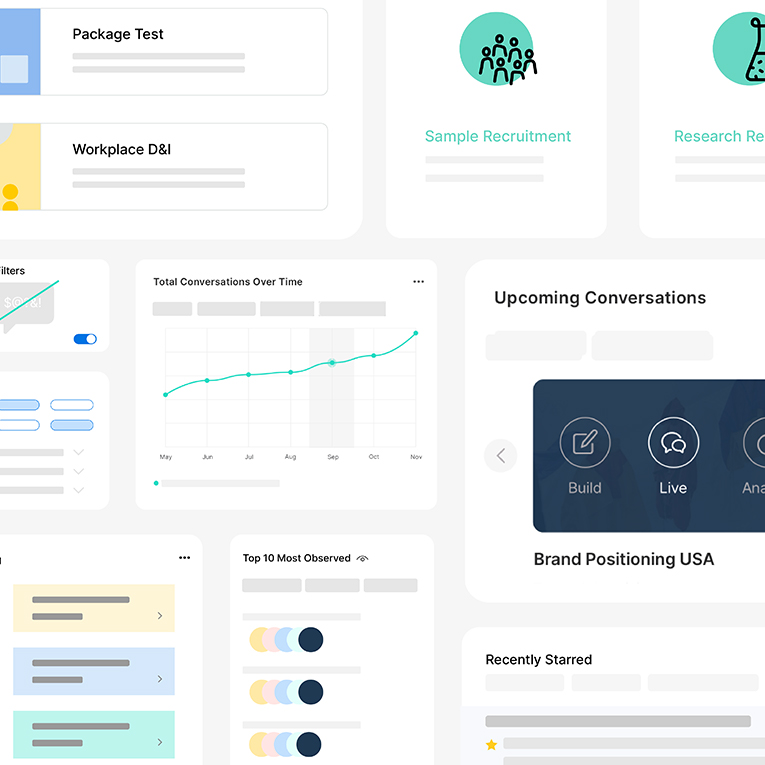.webp)
Trends
How to Calculate Your Sample Size Using a Sample Size Formula

.png)

.png)
Read More

.png)
.png)
.png)
Maria Noesi
November 25, 2021
Remesher
.webp)
Trends
How to Calculate Your Sample Size Using a Sample Size Formula

.png)

.png)
Read More

.png)
.png)
.png)
November 25, 2021
Remesher
.webp)
Trends
How to Calculate Your Sample Size Using a Sample Size Formula

.png)

.png)
Read More

.png)
.png)
.png)
November 25, 2021
Remesher
.webp)
Trends
How to Calculate Your Sample Size Using a Sample Size Formula

.png)

.png)
Read More

.png)
.png)
.png)
November 25, 2021
Remesher
.webp)
Trends
How to Calculate Your Sample Size Using a Sample Size Formula

.png)

.png)
Read More

.png)
.png)
.png)
November 25, 2021
Remesher
.webp)
Trends
How to Calculate Your Sample Size Using a Sample Size Formula

.png)

.png)
Read More

.png)
.png)
.png)
November 25, 2021
Remesher
How to Develop a Diversity & Inclusion Program from Scratch
Creating diversity and inclusion at the workplace is more important than ever before, but often easier said then done. Here are 5 steps to get you started.

An effective diversity and inclusion program can help companies become more competitive and profitable, and yet most organizations still struggle to get it right.
Why do so many diversity and inclusion programs miss the mark, and what even is the mark? We’ve put together a guide on how to successfully develop a diversity and inclusion program from scratch.

Defining & Benchmarking Diversity & Inclusion Internally
Let’s start with the basics. While diversity and inclusion are often mistakenly taken to be interchangeable, the two terms actually represent related but highly distinct concepts.
Diversity is about the presence of individual and group differences. Diverse organizations comprise of employees with a variety of unique backgrounds, experiences, and perspectives.
On the other hand, inclusion is about the environment in which diversity flourishes. Inclusive work environments allow employees from diverse backgrounds to feel welcome to bring their best, most authentic selves to work and create an overall sense of belonging.
An organization has to be both diverse and inclusive in order to fully tap into the value that employees from a range of backgrounds can bring to the table.
Watch: Bringing Your Whole Self to Work (Webinar)

Why Organizations Need DEI Programs
According to SHRM, there are four key drivers that account for the vast majority of business rationales for leading diversity initiatives. Businesses tend to adopt diversity programs because they:
- View diversity as a matter of doing the right thing
- Want to tap into a broader range of backgrounds and skill sets
- Believe diverse workforces better understand a wider
array of consumer segments, leading to improved sales - Must ensure compliance with equal opportunity laws and avoid discrimination claims
Yet, beyond these factors, there are a number of reasons why companies should incorporate diversity and inclusion programs as cornerstones in their corporate strategy.

Diverse companies are more innovative
A 2018 study by Harvard Business Review found that the most diverse companies also tended to be the most innovative, giving them the capacity to market to a larger range of customers. Having employees from a range of backgrounds allowed for companies to lead in innovation in multidimensional ways.

Employees demand diverse workplaces
When considering a place of employment, job seekers and employees also have growing expectations on the level of diversity and inclusion in the workplace. According to Glassdoor, 67% of active and passive job seekers consider workplace diversity an important factor when considering employment opportunities. At the same time, more than 50% of employees also want their workplace to do more to improve diversity.

Diversity helps the bottom line
Finally, diversity can also have positive effects on a company’s financial results. Companies that are diverse tend to perform significantly better than their fellow industry peers, with McKinsey estimating that companies that have both gender and ethnic diversity can financially perform up to 25% better than the national industry median.

The Current State of D&I
Despite the obvious benefits of increased diversity and inclusion in the workplace, the reality still leaves much to be desired. Research from BCG shows that diversity and inclusion efforts have yielded sparse results: although almost all companies have programs in effect, only a quarter of employees from diverse backgrounds feel they have personally benefited from them.
Read: Diversity & Inclusion Trends Report (2020)
When we conducted a live Remesh conversation with more than 100 employees to understand the state of D&I programs broadly, we found that while 77% of respondents believed in the importance of diversity and inclusion programs, almost all respondents indicated that there was a lack of formal D&I training within their organization.
Employees also expressed a need for greater transparency, and for senior management to lead by example.


Roadblocks for Diversity and Inclusion Programs
Here’s where things get complicated.
There is no consensus on what defines "enough" diversity in the workplace, or what diversity means.
Research from Deloitte indicates a generational gap in these perspectives. Older generations tend to view diversity through the lens of representation, focusing on categories like gender, race, and religion. Younger generations instead emphasize cognitive diversity, or the diversity of thoughts, ideas, and skills.

Steps for Building a D&I Program
Step 1: Collect the Data
You need to measure and benchmark the diversity of the current state of your workforce to identify areas of concern and track trends over time. Typical categories for data collection include federal and state protected categories or demographics, but also factors like:
- learning style
- personality type
- life experience
Some data might already be available through Equal Employment Opportunity reporting, while others necessitate voluntary self-identification.
Self-identification is a complex ask: some employees may feel uncomfortable sharing private information, especially if employers aren’t transparent about how data will be collected and used. In some situations, it may be necessary to consult D&I experts or use technologies built to handle anonymous employee feedback.
Read: 100 Open-Ended Employee Feedback Questions
Step 2: Identify Areas of Concern and Develop Objectives
Armed with data on your workforce and company culture, you can now begin to identify areas for improvement and develop a meaningful D&I initiative. Review demographics to find areas of underrepresentation, and pay attention to the locations, departments, and positions in which underrepresentation occurs most. These gaps give insight into your company’s unique D&I challenges.
Some common D&I challenges companies face include:
- Resistance to change. Companies with inflexible cultures diminish the value of diversity as those with diverse perspectives bear the burden of fitting into an existing culture.
- Lagging representation in leadership. An alarming New York Times article entitled “The Top Jobs Where Women Are Outnumbered by Men Named John” highlights the extent of leadership’s diversity crisis in a variety of sectors, from venture capital to government.
- Biased hiring practices. Whether it’s exclusionary job descriptions, filtering for prestigious colleges or companies, or using homogenous interview panels, hiring practices are ripe grounds for unconscious bias.
Digging deep into attitudes about company culture can either help to validate emergent demographic gaps or reveal areas for further research.
If employee perceptions resonate with the results of your review, you know you’re on the right track to making necessary changes...if they don’t resonate, more research might be necessary to understand the discrepancy – and possibly, other methods of research.
Step 3: Craft and Implement Diversity & Inclusion Training
Now that you know the areas most concerning for your company, you can approach developing your D&I program with key objectives. These efforts are what help your company build a more representative and inclusive culture.
Diversity and inclusion initiatives can range from changing policies and practices, training and equipping staff with tools, and sponsoring targeted D&I awareness events. Whether focused on developing or retaining diverse talent and inclusive culture, they’re strongest when they address your specific areas of concern and align with business objectives.
Make D&I the business of every employee, not just human resources, through smaller, simpler initiatives. Programs like lunch-and-learns on D&I topics and online training can give you the momentum necessary to enact meaningful long-term change.
Step 4: Communicate Initiatives
Ensuring employees understand D&I initiatives requires engagement from stakeholders in executive and upper leadership. With over 35% of executives with direct oversight of their companies’ D&I programs believing accountability for success lies with senior executives, it’s important to ensure senior leaders can articulate their business case for D&I, inspire employees to make sustained commitments, and pilot and support D&I efforts.
There’s no such thing as over-communication – especially in times of transformation. Ongoing communications about D&I initiatives propel understanding and increase employee engagement with key programs.
Read: 4 Behaviors That Will Drive Agile Transformation
Step 5: Measure and Dispatch Results
Measuring results for D&I initiatives can make the difference between diversity in theory and diversity in action. The outcomes you measure are your indicators of change - without targeted KPIs, you can’t learn whether your program achieves its intended purpose.
Some outcomes to consider measuring are:
- Representation among groups
- Employee survey scores
- Employee retention
- Public recognition
For example, if the intention of your D&I program is to improve employee retention rates, you can track retention over time.
Supplementing your quantitative research with qualitative methods can help to determine what aspects of your program influenced employee retention. These insights enable you to tweak your programs as necessary: invest in programs with strong results and pivot from those that don’t using agile frameworks that allow fast iteration and learning.
Communicating the results of diversity initiatives demonstrates your organization’s commitment to diversity in the workplace, and can help to bridge the gap between implementation and impact.
Want to keep up with the latest trends in workplace diversity and inclusion?
Stay up-to date.
Stay ahead of the curve. Get it all. Or get what suits you. Our 101 material is great if you’re used to working with an agency. Are you a seasoned pro? Sign up to receive just our advanced materials.






